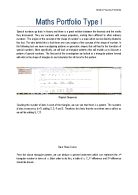1002→2088→8514→7083→8352→6174
When the process continues indefinitely, it has reached a number where the highest possible number for those digits subtract the lowest possible number for those digits end up in the same number.
Task 4
What is the longest length bracelet and how many different bracelets are there of this length?
0→
1→
2→4→8→6→
3→9→7→1→
4→6
5→
6→
7→9→3→1→
8→4→2→6→
9→1→
The longest length bracelet for the above process is four numbers. There are four numbers that can make this length (2,3,7,8).
Task 5
What is the shortest length bracelet formed from the last digits of a generalised Fibonacci sequence?
0→1→1→2→3→5→8→3→1→4→5→9→4→3→7→0→7→7→4→1→5→6→1→7→8→5→3→8→1→9→0→9→9→8→7→5→2→7→9→6→5→1→6→7→3→0→3→3→6→9→5→4→9→3→2→5→7→2→9→1→
0→2→2→4→6→0→6→6→2→8→0→8→8→6→4→0→4→4→8→2
0→3→3→6→9→5→4→9→3→2→5→7→2→9→1→0→1→1→2→3→5→8→3→1→4→5→9→4→3→7→0→7→7→4→1→5→6→1→7→8→5→3→8→1→9→0→9→9→8→7→5→2→7→9→6→5→1→6→7→3→
0→4→4→8→2→0→2→2→4→6→0→6→6→2→8→0→8→8→6→4→
0→5→5→
0→6→6→2→ Too Long
0→7→7→4
0→8→8→6
0→9→9→8
1→1→2→3
1→2→3→5
1→3→4→7
1→4→5→9
1→5→6→1→7
1→6→7→3
1→7→8→5
1→8→9→7
1→9→0→9
2→2→4→6
2→3→5→8
2→4→6→0
2→5→7→2→9
2→6→8→4
2→7→9→6
2→8→0→8
2→9→1→0
3→3→6→9
3→4→7→1
3→5→8→3
3→6→9→5
3→7→0→7
3→8→1→9
3→9→2→1
4→4→8→2
4→5→9→4→3
4→6→0→6
4→7→1→8
4→8→2→0
4→9→3→2
5→5→0
5→6→1→7
5→7→2→9
5→8→3→1
5→9→4→3
6→6→2→8
6→7→3→0→3
6→8→4→2
6→9→5→4
7→7→4→1
7→8→5→3
7→9→6→5
8→8→6→4
8→9→7→6
9→9→8→7
The shortest length bracelet formed from the last digits of a generalised Fibonacci sequence is three numbers. Two bracelets can do this – one beginning with 0→5, one beginning with 5→5. But these are essentially two starting points of the same chain.
Task 6
Abbreviations: Happy Number - HN
10,13,23,49,97 are happy numbers under 100 (given)
4,16,20,37,42,58,89 are not happy numbers under 100 (given)
99→162→41→17→50→25→29→85→89 89 is not a HN, therefore 99 is not
98→145→42 42 is not a HN, therefore 98 is not
97→Happy Number (Given) (1)
96→117→51→26→40→16→ 16 is not a HN, therefore 96 is not
95→106→37→58→89→145→42 42 is not a HN, therefore 95 is not
94→97→97 is a HN, therefore 94 is one (2)
93→90→81→65→61→37→ 37 is not a HN, therefore 93 is not
92→85→89 89 is not a HN, therefore 92 is not
91→82→68→100→10→1 HN (3)
90→81→ 81 is not a HN, therefore 90 is not
89→145→42 42 is not a HN, therefore 89 is not
88→128→69→117→51→26→40→16 16 is not a HN, therefore 88 is not
87→113→11→2→4 4 is not a HN, therefore 87 is not
86→100→10→1 HN (4)
85→89 89 is not a HN, therefore 85 is not
84→80→64→52→29→85 85 is not a HN, therefore 84 is not
83→73→58→89 89 is not a HN, therefore 83 is not
82→68→100→10→1 HN (5)
The five largest happy numbers are 97, 94, 91, 86 and 82.
Table of Outcomes
Task 7
Abbreviations: 1 – Outcome 1
2 – Outcome 2
3 – Outcome 3
One of the three outcomes are given
- The numbers end up on the number one (1). They are happy numbers.
(See Task 6 for evidence)
99→90→81→9 Does not fit in rule 1, therefore must be rule 2.
98→73→16→37→52→9→81→9 (2)
97→58→59→86→44→20→2→4→16… (2) 16 is in rule 2, therefore 97 must be
96→45→29→83→17→50→5→25→27→51→6→36→39→84→24→18→65→31→4→16… (2)
95→34→19→82→12→5… (2)
94→25… (2)
93→18→65… (2)
92→13→10→1 (1)
91→10→1(1)
90→9→81→65→31→4…(2)
89→89→ Does not fit in either R1 or R2. Therefore this must be the new rule. (3)
The three outcomes are:
- The numbers end up on the number one (1). They are happy numbers.
(See Task 6 for evidence)
- The numbers end in a loop of two (2) numbers (81,9)
- The number ends in a one number loop (89)
Task 8
99→80→88→60→66→20→22→40→44→80→ 1 is already given. It ends in a loop of 8 numbers (80,88,60,66,20,22,40,44).
98→71→86→42→62→84→24→ 2 ends in a loop of three numbers (62,84,24).
97→62→(2)
96→53→82→06→66→(1)
95→44→(1)
94→35→82→(1)
93→26→84→(2)
92→17→86→(2)
91→08→88→(1)
90→99→(1)
88→(1)
77→40→(1)
66→(1)
55→00→00 New Rule. It ends in a loop of 1 number (00).
44→80→(1)
33→60→(1)
22→40→(1)
11→20→(1)
The two other outcomes for this altered rule are:
- The numbers end in a loop of 3 numbers (62,84,24)
- The number ends in a loop of 1 number (00).
END OF ASSIGNMENT







